Glenastar Cottage
Houses within 10km of this house
Displaying 24 houses.
Houses within 10km of Glenastar Cottage
Displaying 24 houses.
| House name | Description | |
|---|---|---|
| Cahermoyle/Cahirmoyle | The present house was built in the early 1870s by Edward O'Brien, son of William Smith O'Brien replacing an earlier house which was the home of his grandmother the Dowager Lady O'Brien in the early 1850s. The Ordnance Survey Field Name Book states that Cahermoyle was held from Lord Southwell. The house was valued at £81+ in 1906 and sold by the O'Briens in 1919. In 1988 Cahermoyle and 200 acres were offered for sale by the Oblate Fathers who had had a Novitate there since the early 20th century. The house is now a nursing home. |
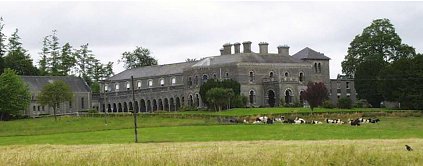
|
| Ballysteen | Inhabited by James Massey in the early 1850s who held the property from the Earl of Clare. The house was valued at £11+ at that time. Though still extant it has fallen into disuse. |

|
| Movena | A house on the Roche estate occupied by Bridget Farrell in the early 1850s when the buildings were valued at £11. Movena is marked on the first edition Ordnance Survey map. It is now a ruin. |
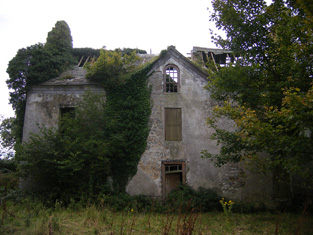
|
| Waterpark House | A house on the Monteagle estate, the residence of Catherine Nolan in the early 1850s, when it was valued at £10. It is labelled as Waterpark House on the 25-inch Ordnance Survey map of the 1890s. A house is still extant at the site. | |
| Shanagolden House | According to the Ordnance Field Name Books this house was erected in 1812 on the site of a former house. This three-storied house was situated on the Monteagle estate and was occupied by John Griffin in 1814 and by the Reverend George Vincent, rector of Shanagolden in 1837. His son Arthur Vincent was resident in the early 1850s when the house was valued at £20 and in the 1870s when he is recorded as owning 267 acres in county Limerick. It is no longer extant. | |
| Glenville | The Massys lived at Glenville from the 1760s. The present house was built by William Massy in 1808. William Massey was resident in 1814, J. Massey in 1837 and William Massy in the early 1850s. William Massy held the house valued at almost £14 from Stephen Creagh. The house came into the possession of the Langford family, relations of the Massys in the early 20th century and they were still resident there in the 1970s. |
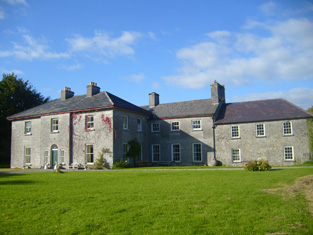
|
| Old Abbey | The home of the Greene family for most of the 18th century. In 1786 Wilson refers to "Abbey" as the seat of Mr. Greene. Subsequent tenants were the Hodges and the Morgans. The Ordnance Field Name Books state that part of the building was very ancient and that a new front had been built in 1805. George Morgan was resident in 1814, William Morgan in 1837 and in the early 1850s, when he held the property from the Earl of Cork. Old Abbey passed to Willliam's daughter, Mrs Wardell, and stayed in the possession of the Wardell family into the 20th century. It is no longer extant. |
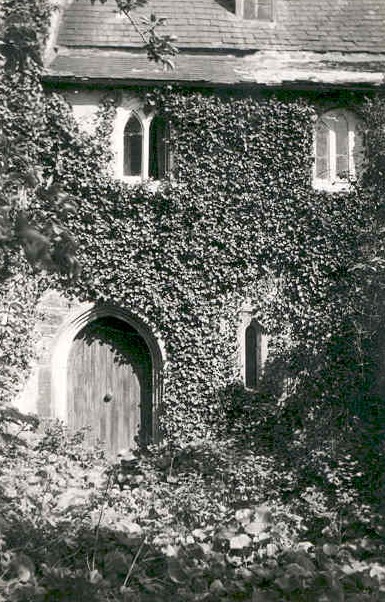
|
| Kilcosgrave | Occupied by Danie Sheahan in 1814. The Ordnance Survey Field Name Book states that Kilcosgrave House was built on the site of the Castle and was formerly the residence of the Langford family. It was then a ruin except for one part which had been converted into a farm house. The name of this house is usually spelt Kilcosgriff. | |
| Elm Hill | An 18th century house the home of a branch of the Studdert family held from Lord Southwell. Occupied by Ion Studdert in the mid 19th century when the buildings were valued at £27. It was advertised for sale in June 1855 when it contained a "spacious and lofty parlour, drawing room and hall; nine capital bedrooms..". A lithograph of the house is included with the rental. In 1906 this house, valued at £16, was occupied by the representative of Thomas Magner. In the later twenteth century owned by the Woulfe family and now derelict. |
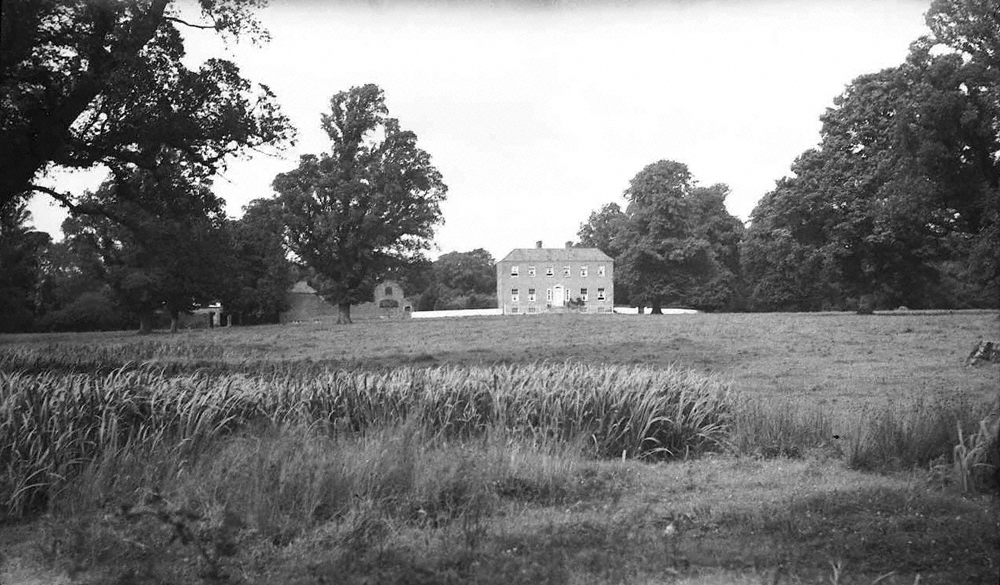
|
| Kilscannell | Occupied by Richard Condon in the 1830s. Located on the estate of Lady O'Brien circa 1840 this was a large house of two stories with offices but in a state of bad repair and unoccupied. It was still vacant at the time of Griffith's Valuation and held by Pierce Brown. | |
| Chesterfield | Occupied by Maurice P. O. [P]helan in 1814 and by Major Sullivan in 1837. Held from the Major's representatives in the early 1850s and occupied by Francis Brown. The buildings were valued at £18. There is a modern house at the site but the stableyard and farm buildings still survive. |
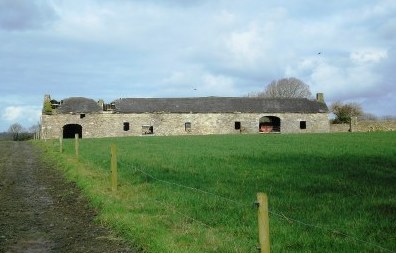
|
| Dromin | This house was the home of Nicholas Meade in 1837 and of his representatives in the early 1850s. It was located on the Devon estate and was valued at £13. It is still extant and occupied. |

|
| Moyveedy | A house on the Devon estate valued at £10 and occupied by Thomas Fitzgerald in the early 1850s. The house is still extant and part of a large farm. |

|
| Cloonyscrehane | This house, located on the Devon estate, was valued at £12 at the time of Griffith's Valuation and was the residence of Patrick Candon. A house and farm are still extant at the site. | |
| Cullenagh | This house, situated on the outskirts of Newcastle West, was the home of Patrick Griffin in 1814 and at the time of Griffith's Valuation. Valued at £27 it was held from the trustees of the Earl of Devon. The house remained until the mid 20th century but is no longer extant and a large industrial complex exists to the rear of the site. | |
| Woodlawn | A house on the Devon estate occupied by George Bolster, medical doctor, at the time of Griffith's Valuation and valued at £11+. Woodlawn was the residence of R. Cart in 1837. It is still extant. | |
| Lissurland | This was an O'Brien home located on the Devon estate. Occupied by Connor O'Brien in 1814 and Henry O'Brien in the early 1850s, when the buildings were valued at £12. The house survived into the 20th century but is no longe extant. | |
| Newcastle | The original Fitzgerald castle was granted to the Courtenay family in 1591. The Castle was occupied by David Mahony and his son, Pierce Mahony, in the mid 18th century. Bence Jones writes that the residence of the Earls of Devon in county Limerick was a house of nine bays in the castle precincts. It was held by them in fee and valued at £55 at the time of Griffith's Valuation. This house was occupied by the agent to the Devon estate. Slater describes it as Courtenay Castle in 1894 when it was occupied by Charles Curling. In 1910 it was bought by the Curling family who had been agents and was burnt in 1922. The Castle remained in the possession of the Curlings until the 1940s. |

|
| Garryduff | This house was the residence of David Hayes in 1814. At the time of Griffith's Valuation it was occupied by the representatives of William Leake [a Limerick solicitor], who held the property from Robert Maunsell. The buildings were valued at £10+. Recorded as untenanted at the time of the sale in 1853, a lithograph of the house is included in the sale rental. | |
| Knockaderry | Knockaderry was the seat of a branch of the Evans family in the 19th century. In 1786 Wilson refers to it as the seat of Mr. D'Arcy. It was occupied by Thomas D'Arcy Evans in 1814. Lewis refers to it as the "ancient seat of the D’Arcy family", the present residence of T.D’Arcy Evans. At the time of Griffith's Valuation it appears to have been in use as an auxillary work house, valued at £35. Knockaderry was held from the Jephson family and a lithograph of the house is included in the Jephson sale rental of 1851. In 1944 the Irish Tourist Association surveyor writes that the house was not well kept and was "rapidly falling to pieces". He also records the house as the birthplace of Mary Lady Heath, an early female pilot. |
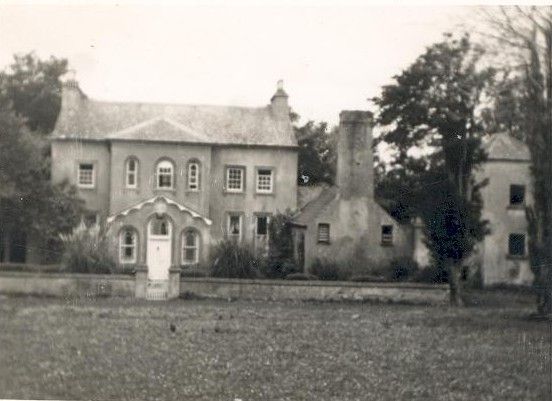
|
| Castleview | Occupied by Brian Sheehy in 1814 and by Thomas Locke in 1837. At the time of Griffith's Valuation Castleview was the residence of the Rev Robert M. Rodwell, the buildings were valued at £30. Birthplace of William John Locke Travers in 1819, a New Zealand lawyer, politican and naturalist, see http://www.teara.govt.nz/1966/T/TraversWilliamThomasLocke/TraversWilliamThomasLocke/en | |
| Ashgrove | Ashgrove was the home of the Upton family in the 18th century. Occupied by John Upton in 1814 and J.W. Upton in 1837. This house was being used as an Auxiliary Workhouse at the time of Griffith's Valuation. William Stephenson held the townland at this time. His interest was advertised for sale in June 1854. The tenant was Mr Denis Moylan who held on a 7 year lease from May 1852. A house is still extant at this site. | |
| Glenastar | Glenster was occupied by Samuel Upton in 1814 and by J.U. Upton in 1837. Described at the time of the first Ordnance Survey as a small thatched house of one storey, the residence of John Upton. By the time of Griffith's Valuation the townland of Glenastar was held by the representatives of John Upton. The highest value on any house in the townland was £1.15 shillings and it was held by them in fee. A house is still extant at Glenastar. | |
| Ballynabearna | Occupied by William J. Upton in 1814 and by W. Upton in 1837. This house was valued at £2 in the early 1850s and held by John Upton from Sir Robert Bateson. the building labelled Ballynabearna House on the 1st edition Ordnance Survey map is not the same as the house on the later 25-inch map of the 1890s. Buildings are still extant at the site. |

